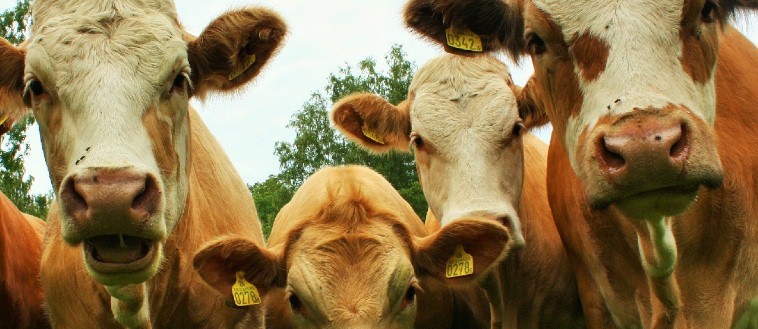
|
|
|
Employee Retention: Future Recruiting Metric
In most cases, it is easier to spot talent and hire them than it is to retain them. In the near future, employee retention may become part of the recruiting metrics, according to an article from Human Resources Today.
Why This Metric Will Matter
First-year retention is going to be essential in the years to follow, especially since the workplace will be composed of about 50% Millennials by 2018. Millennials, also known as Echo Boomers, share almost the same traits as Baby Boomers. However, they also are more of "career butterflies" than the people from Generation X. in fact, statistics shows that only 15% of Millennials believe in working at the same company for five years or longer.
How to Improve First-Year Retention Statistics
One would expect new employees who took the job a few weeks ago to feel excited and engaged for the next few months. That is not always the case.
Employee retention and engagement will depend on three things. An accurate job preview during the recruiting process will set expectations. There should be manager engagement during the hiring process, not just to join but to lead in this crucial stage. The team should also be engaged during this process to gauge for a fit, as success will also rely heavily on this.
Recruiting will evolve by leaps and bounds over the next few years. This is why hiring managers should stay updated on the latest recruiting trends. You can read the full article here. You might also want to download our free e-book "Recruiting in a Multi-Generational Talent Pool" to find out how to hire, engage, and retain top talent from the three current workforce generations.
DAN SIMMONS, CPC, Sr. Recruiter
 Continental
Search is owned by Daniel C. Simmons, a Certified Personnel Consultant
(CPC) who has been recruiting since 1991. In December 2015, Dan
celebrated his 650th career placement. Dan has won more than 20 awards
from Top Echelon Network, America's leading placement network, including Placer of the Year in 2009 and the prestigious Million Dollar Award.
He is also a member of the National Association of Personnel Services.
Dan has been a recruiter in the animal feed industry since 2002. Continental
Search is owned by Daniel C. Simmons, a Certified Personnel Consultant
(CPC) who has been recruiting since 1991. In December 2015, Dan
celebrated his 650th career placement. Dan has won more than 20 awards
from Top Echelon Network, America's leading placement network, including Placer of the Year in 2009 and the prestigious Million Dollar Award.
He is also a member of the National Association of Personnel Services.
Dan has been a recruiter in the animal feed industry since 2002.
Dan is a student of the recruiting industry, as well as a
speaker/trainer, both in-person and online, for various industry
webinars. He has been a featured speaker at the Top Echelon National
Convention. Dan has also been a guest speaker providing insight into
career management at universities and trade associations. These include
the Reciprocal Meat Conference for the American Meat Science Association
in 2008 and 2009, the Washington D.C. Chapter of ARPAS (American
Registry of Professional Animal Scientists) in 2008, and the Animal
Science Departments of both Penn State University and the University of
Delaware.


Too Low SCC: Dangerous For Dairy Cows
PennState Extension's Dairy News Section is a great source of information. I recently found an article on their website that will interest dairy producers. It was an article that talked about somatic cell counts in dairy cows.
Somatic cells are a type of white blood cells whose purpose is to combat infection and repair damaged tissue. When the udder of a dairy cow is infected, the somatic cells travel to the udder and into the milk to protect this area from invading bacteria. This is an important process because if not for it, even the mildest case of mastitis would take longer to clear up and the amount of tissue damage would be increased.
According to Amber Yutzy, Penn State Extension's Dairy Extension Educator, "Somatic cell counts in the udder do not reflect the pool of cells which can be recruited from the blood to fight infections." She says the milk somatic cell count only measures the number of cells found in the milk. Yutzy says that the higher the SCC, the greater the chance that the area is infected.
Yutzy encourages low SCC counts to improve producer profitability and production. However, if it dips too low, she believes it can cause damage in cows. Their immune system will have a hard time repairing damage to the tissue and will lead to longer convalescence periods. The ideal individual cow cell count should be between 100,000 to 150,000. Yutzy says that if the count fell below 50,000, the cow would respond slowly to infection.
RICK PASCUAL, CPC/ PRC, Recruiter
Rick Pascual recruits in dairy nutrition for feed companies and their suppliers across the USA. Rick joined Continental Search in January 2015 and has successfully filled a number of searches for nutritionists, sales, and sales management for leading companies.
After
completing coursework and a grueling exam, Rick became a Certified
Personnel Consultant (CPC) in November 2015, as well as a Professional
Recruiting Consultant (PRC) by AIRS in April 2016. Visit his LinkedIn profile for more information and to stay updated with news about recent dairy trends.
Is Slow Grow The Best Way To Go?
Over the years, the poultry industry has grown and evolved. Chicken growth rates have increased drastically, for which most producers are thankful. However, according to an article in Poultry Times, "solutions often create an equivalent consequence."
The American Society for the Prevention of Cruelty to Animals (ASPCA), Compassion in World Farming (CIWF), other animal welfare groups, and a number of news outlets have been raising awareness about the negative effects of the improved growth rate in chickens. This has a few companies pledging to slow grow their chickens.
According to the National Chicken Council (NCC), many of the issues caused by the increase in growth rates of chickens have been addressed. Using DNA mapping and breeding selectively, the broiler producers have improved chicken health conditions.
According to research, growth rate is not the only factor that contributes to leg and joint issues in chickens. A study in 2008 done by Toby Knowles, Bristol University's Division of Food Animal Science Professor, and his colleagues, 25% of chickens that are raised in broiler houses had poor locomotion. This was partially caused by lack of exercise and high stocking density.
While some slow growth producers provide their chickens with more space, there is no guarantee that the capacity issue will be resolved. Otherwise known as heritage chicken, slow grow chickens are not defined by the space in which they are allowed. They are defined by their breed, which takes twice the amount of time to mature.
TRISH VALENZUELA, CPC/ PRC,Recruiter
Trish Valenzuela specializes in recruiting for poultry feed additive companies. She has filled positions in technical support, sales, and sales management across the USA.
Trish joined Continental Search in July 2015 and through hard study, she passed two certification programs. She is now a Certified Personnel Consultant (CPC) and a Professional Recruiting Consultant (PRC).
Visit her LinkedIn profile to connect with her and stay updated with current poultry trends. Trish can be reached at (302) 248-8242, through LinkedIn, or at trish@consearch.com.
   

|
Copyright © 2017 Animal Science Monitor, All rights reserved. | |
|
|
|
|
|
|
|
|
